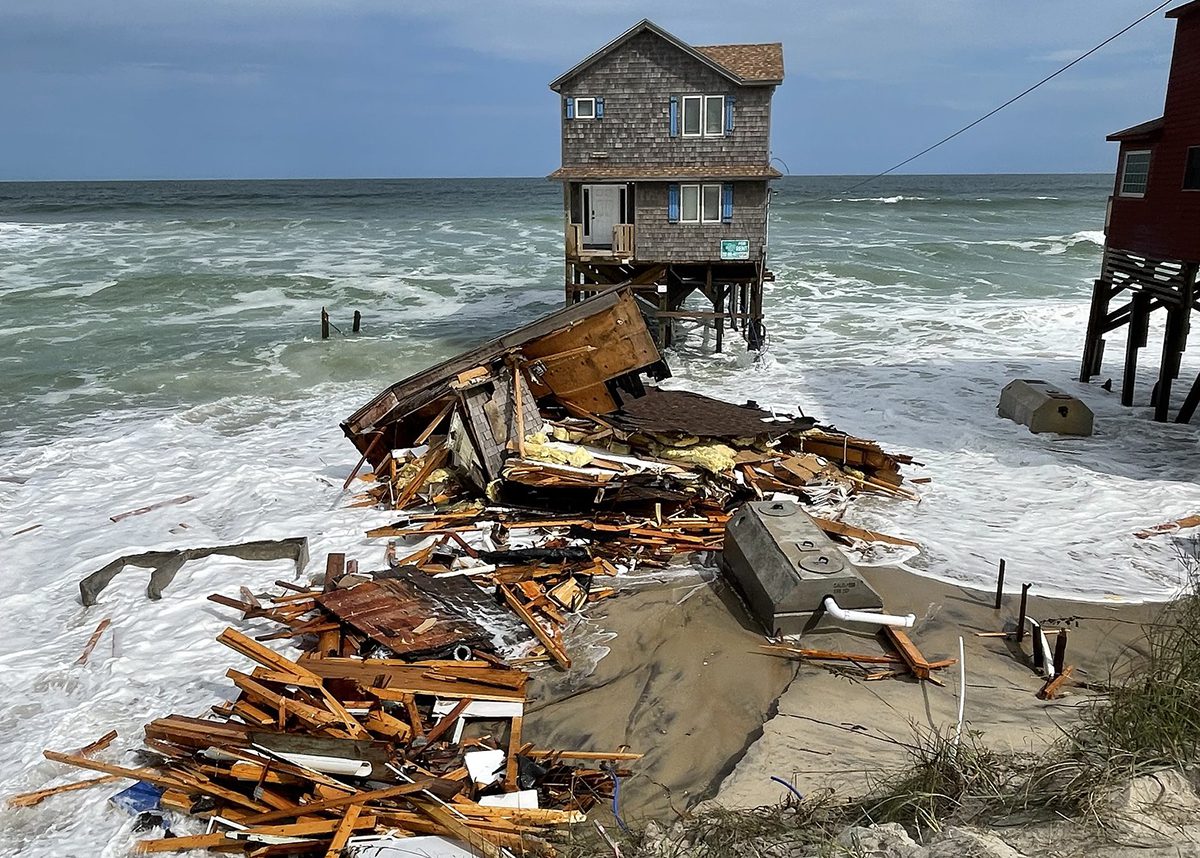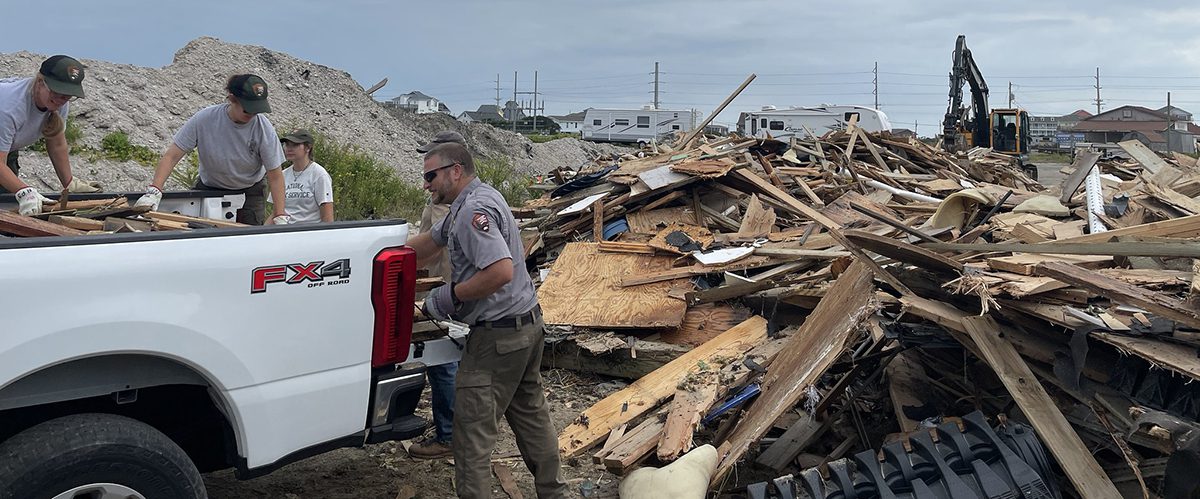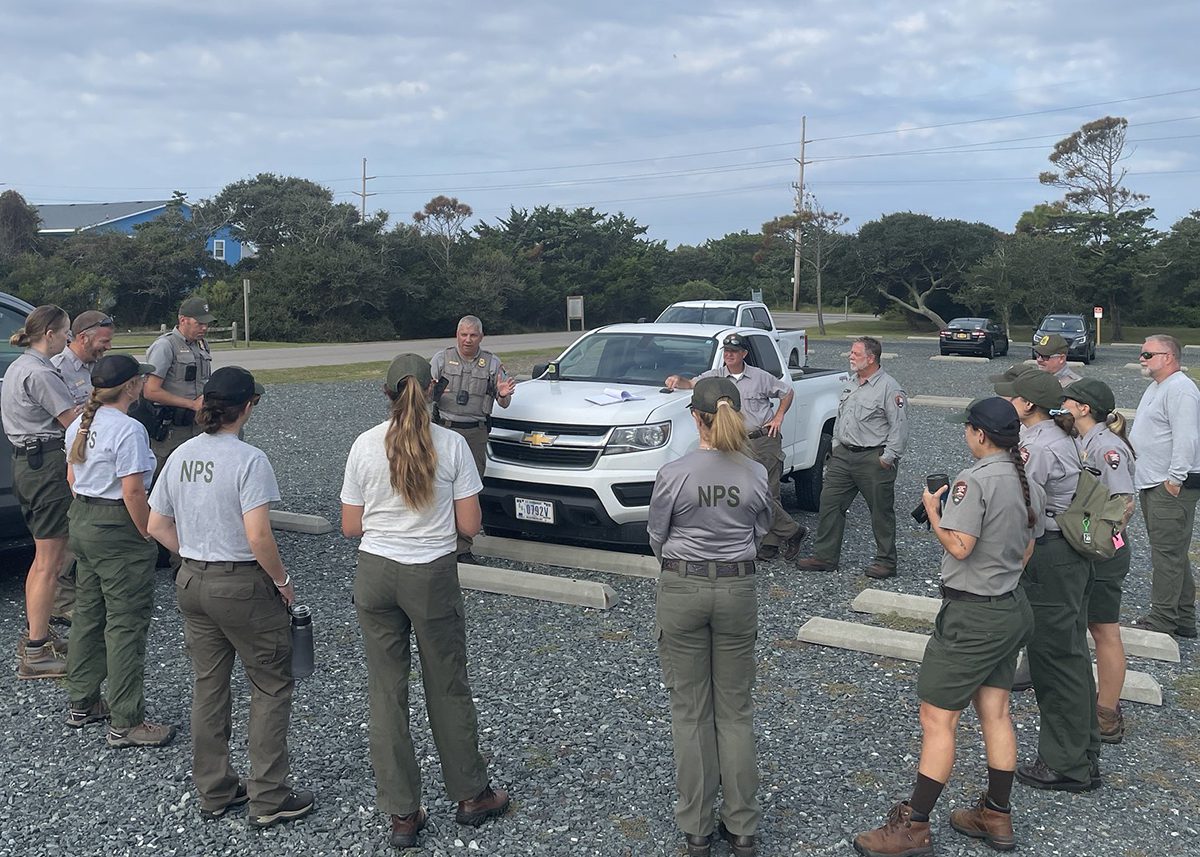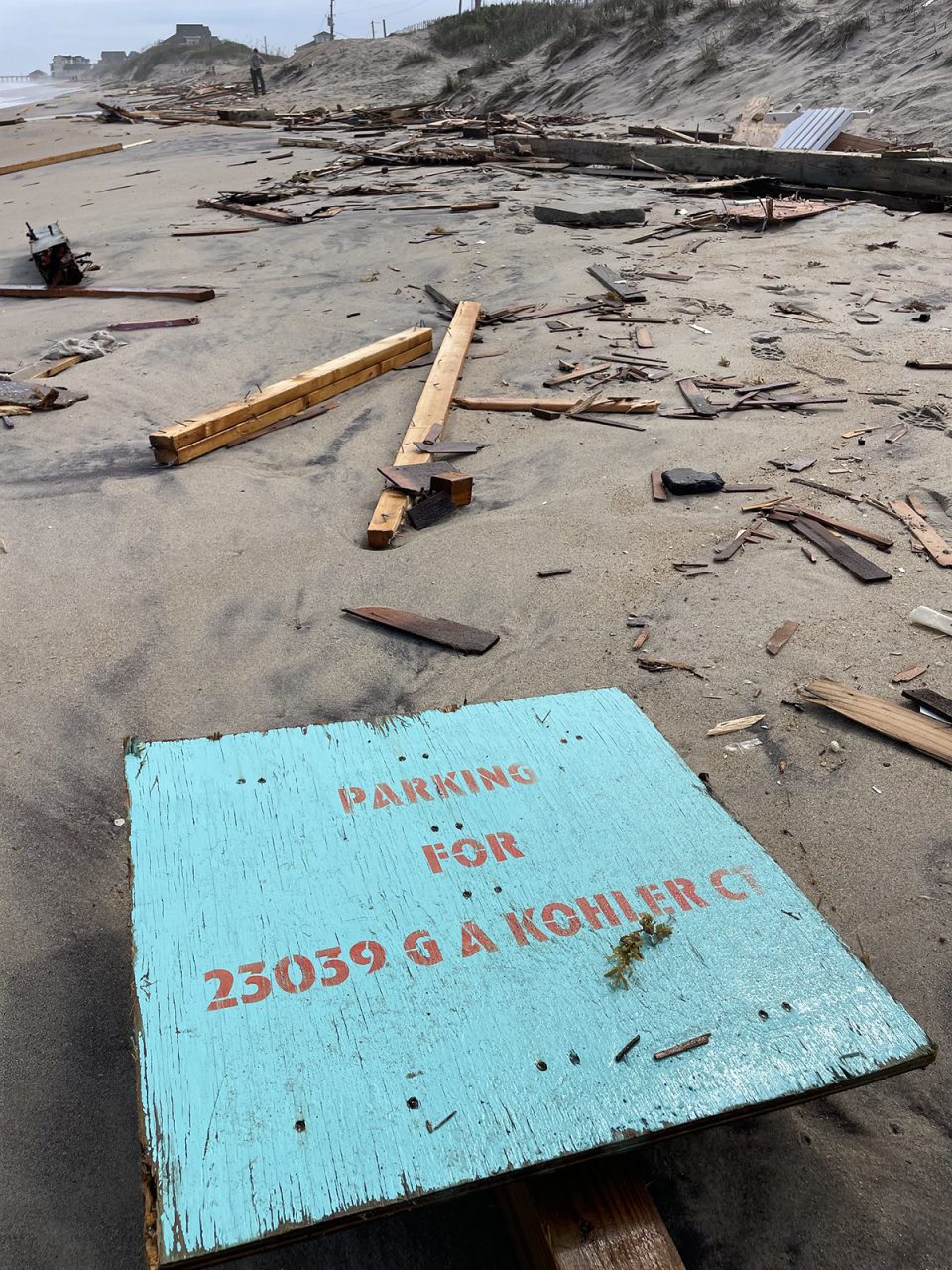
Like a slow-rolling disaster, the third house in four days collapsed Tuesday afternoon into the surf along the village of Rodanthe, casting tons more construction debris into the Atlantic and onto the beaches for miles within Cape Hatteras National Seashore.
“We have 30 people that are out there right now,” Cape Hatteras National Seashore Superintendent Dave Hallac told Coastal Review Wednesday in an interview, referring to park service staff who are racing the wind and tide to pick up debris, working alongside dozens of contract workers and volunteers.
Supporter Spotlight
Hallac described the state of the beach after the house fell Tuesday as a “total mess.” The ocean claimed two houses on Friday.
“I would say the debris field was so dense and thick, for the first quarter-mile south of the house collapse site that it was difficult to actually walk,” he said. “And that debris field continued to be fairly significant, actually, past the Rodanthe Pier.”
The superintendent also observed a large amount of “extremely hazardous” debris in the surf being “thrown all over the place as the waves were breaking.”
According to a National Park Service press release, the park has temporarily closed the beach from G A Kohler Court to Wimble Shores North Court in Waves, including the Dare County beach access on N.C. Highway 12 in Rodanthe.

Swimmers and surfers have been warned to stay out the ocean in front of the villages of Rodanthe, Waves and Salvo, and pedestrians have been cautioned to wear hard-soled shoes in the vicinity of the beach and ocean.
Supporter Spotlight
The latest house collapse at 23039 G A Kohler Court follows one at 23001 G A Kohler Court that fell Friday morning and another to its south at 23009 G A Kohler that collapsed shortly after 9:15 that night.
Each of the wooden houses, built on tall pilings, were unoccupied at the time of their collapse.
In a frustrating twist, plans were in the works to proactively demolish the house that collapsed Tuesday.
Hallac said the house had been foreclosed on and the bank had hired a real estate agent, who in turn hired a local contractor to tear it down. The contractor, W.M. Dunn Construction in Powells Point, was ready to go, he said, but the work was delayed by the very same high tides and powerful currents — pumped up by a couple of offshore storm systems and the full moon — that ultimately took it down. The same house had already been damaged Friday when the nearby house at 23009 collapsed.

So instead of the demolition, the contractor will be doing the cleanup of the house debris, Hallac said.
“Trying to secure the bulk of debris between the tide cycles after the third house fell,” a Tuesday post said on the contractor’s website.
A total of 10 houses have collapsed in the last four years in the Cape Hatteras National Seashore, and W.M. Dunn and company owner Mike Dunn have been contracted to clean up most of them.
Although homeowners are responsible for hiring the contractor to clean up the debris from their house, the situation is complicated not just by the fact that it doesn’t stay where it fell, but also that it is mixed with debris from other collapsed houses.
Homeowners are billed by the park service for the time that park service staff dedicates to cleaning debris, Hallac said. They are also asked to move or demolish houses on the eroded shoreline that are at risk of being destroyed by the ocean. But the agency, he said, is not out to punish homeowners, many of whom bought their houses when they were far back from the ocean.
“We’re focused on working with the homeowners and finding constructive solutions,” he said. “Many of these owners have owned these houses for a long period of time.”

In the first two recent collapses, remains of the structures and whatever they contained could be found 20 miles down the beach, Hallac said.
Once debris gets into the Atlantic, it’s nearly impossible, or certainly much more difficult, to retrieve. Huge boards with nails in them and pieces of fiberglass, strands of wire, broken windows — anything and everything found in a house — could bob around the ocean, be taken far away by currents or sink into the sandy bottom.
Although the ideal solution would be getting every house off the beach before it falls, the reality is that a combination of private property rights versus public safety concerns, coastal regulations and policies, insurance compensation, legal constraints, and multiple jurisdictional issues make efficient and effective responses to eroding shorelines and other climate change complexities extremely difficult.
A report released in August, “Managing Threatened Oceanfront Structures: Ideas From An Interagency Work Group,” was the culmination of multiple meetings the work group held over two years. The group was co-chaired by Hallac and Braxton Davis. During this time, Davis was the director of the Division of Coastal Management, under the North Carolina Department of Environmental Quality. Since February, Davis has been the executive director of the North Carolina Coastal Federation.
According to the report, in 2020 more than 750 of about 8,777 oceanfront structures on the North Carolina coast were at risk from oceanfront erosion, a term that was defined as lacking dunes or vegetation between the structure and ocean. It also noted that “the situation is anticipated to worsen with increasing sea level rise and coastal storms.”
The task force reviewed existing policies, laws, grant funds and coastal programs, and discussed tweaks or additions to them.
None of the numerous short-term or long-term proposals detailed in the report included simple or quick solutions. For instance, one idea was updating and revising the National Flood Insurance Program, but that could require an act of Congress. Still, the report broadly outlines options and goals.
With the recent collapses, Hallac said the report is getting more attention from their partners with the state and Dare County, among others.
“Definitely, our colleagues are reading the report, and we’re having a lot of discussions about certain options that are in the report,” he said.
For instance, there is more interest in scaling up a property-acquisition program, similar to a grant program the National Seashore used recently to acquire and demolish two other threatened oceanfront structures.
“So I think there’s a lot of momentum behind the report,” Hallac said. “I can’t say there’s a specific action that has come out of it, but it has definitely been a platform for having more discussions and working towards solutions. But I will continue to say that I’m not sure there’s going to be a silver bullet,” he added. “It’s a matter of, I think, all of the ideas that are in that (report) have merit. They’re worth further discussion.”
Meanwhile, two more houses remain standing — for now — in the surf near where the other three just fell.








